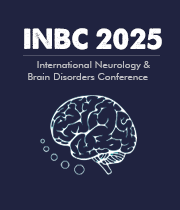Title : A twist in diagnosis: A young woman’s journey from psychiatric symptoms to anti-NMDAR encephalitis with treatment challenges – A case report
Abstract:
Background: Autoimmune encephalitis (AE) is an immune mediated condition that affects the central nervous system. It is often characterized by a paraneoplastic inflammatory process involving the limbic structures, although non-paraneoplastic cases with extra-limbic involvement have also been described. clinical manifestations range from cognitive impairment and psychiatric symptoms to seizures. This case highlights the challenges in diagnosing AE and the efficacy of an alternative treatment.
Case presentation: A 22-year-old female presented to the emergency department with acute confusion, visual hallucinations, and disorganized speech. Initial evaluation revealed altered mental status without focal deficits and stable vital signs. She was treated with quetiapine 50 mg and admitted to the psychiatric department. In the following days her condition worsened presenting with psychomotor agitation, seizures and insomnia. The psychiatric department ruled out underlying psychiatric disorder and referred the patient to neurology. Negative toxicology and antibody screenings further complicated matters. Lumbar puncture showed mild pleocytosis, and brain MRI revealed a right parieto-temporo-insular lesion suggestive of encephalitis or acute disseminated encephalomyelitis. Definitive diagnosis was established through a positive anti-NMDA receptor antibody panel in cerebrospinal fluid. Initial treatment with 1g of intravenous methylprednisolone was established. However, soon after starting it the patient developed facial flushing, rash on thorax and tachycardia, therefore the medication was discontinued due to suspected allergic reaction. Consequently, rituximab, an alternative immunomodulatory agent, was initiated. The patient received two 1000 mg infusions, spaced by two weeks, which were well tolerated and led to marked clinical recovery, demonstrating both the safety and effectiveness of the treatment.
Discussion: The mechanism behind autoimmune encephalitis is the binding of IgG to NMDA receptor NR1 subunit leading to internalization of the receptor and decrease in its synaptic currents. Anti-NMDA receptor encephalitis is a severe but potentially reversible autoimmune condition. Early recognition and prompt immunotherapy are critical for improving outcomes. Although first-line treatments typically include corticosteroids, our patient experienced an adverse reaction to it, necessitating an alternative approach. Rituximab, a second-line immunotherapy targeting B cells, was initiated, resulting in excellent clinical recovery and demonstrating its effectiveness and tolerability in cases where standard therapies are contraindicated or ineffective.
Conclusion: Autoimmune encephalitis should be considered in young patients with initial psychiatric symptoms and subsequent refractory seizures. This case illustrates the value of early recognition and demonstrates how alternative treatments, such as rituximab, can lead to favorable outcomes when corticosteroids are not tolerated.
Keywords: Autoimmune Encephalitis, Anti-NMDA Receptor Encephalitis, Psychosis, Immunotherapy, Alternative Treatment, Monoclonal Antibodies.



